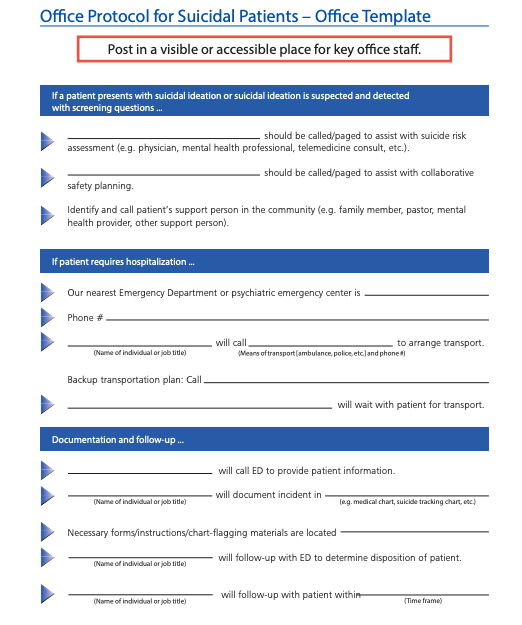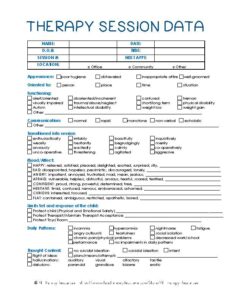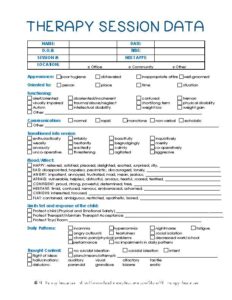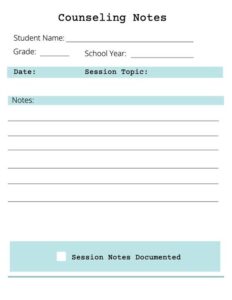Navigating a counseling session when a client is experiencing suicidal ideation can feel incredibly weighty. It’s a delicate dance of providing support, assessing risk, and ensuring their safety. But beyond the immediate needs of the client, there’s also the critical aspect of documentation. Properly documenting these sessions isn’t just about compliance; it’s about protecting both the client and yourself, providing a clear record of the interventions you took and the rationale behind them. It can feel overwhelming, but having a solid structure to guide you can make all the difference.

Think of a well-designed counseling documentation template for suicidal sessions as your safety net. It prompts you to gather essential information, tracks the evolution of the client’s state, and serves as a reference point for future sessions or collaborations with other professionals. It helps you remember the crucial details when recall might be compromised due to stress or the emotional intensity of the situation. It’s a practical tool that supports ethical and responsible practice.
In this article, we’ll delve into the importance of comprehensive documentation in suicidal sessions, exploring the key elements that should be included in your template. We’ll discuss the legal and ethical considerations, and provide guidance on how to create a system that works for you, ensuring that you’re prepared to provide the best possible care while maintaining clear and accurate records. Let’s get started by exploring why this documentation matters so much.
Why Detailed Documentation is Crucial in Suicidal Sessions
The weight of responsibility in a suicidal session is immense. Counselors carry the duty of understanding, assessing, and helping their client navigate a very difficult and potentially dangerous situation. In the midst of this, documentation might feel like a secondary concern, but it’s actually a fundamental component of ethical and effective care. Comprehensive documentation in these sessions is a necessity, providing both immediate and long-term benefits. It’s more than just ticking boxes on a form; it’s about creating a thorough and accurate record of the client’s experience, the counselor’s assessment, and the interventions that were implemented.
One of the most significant reasons for meticulous documentation is legal protection. In the unfortunate event of a negative outcome, detailed records can serve as evidence of the care provided, demonstrating that the counselor acted responsibly and within the bounds of ethical and legal guidelines. A comprehensive counseling documentation template for suicidal sessions ensures you haven’t missed vital details, demonstrating your adherence to standards of care. This can be invaluable in mitigating potential liability.
Ethically, detailed documentation reflects a commitment to transparency and accountability. It demonstrates that the counselor is taking the client’s concerns seriously and is actively working to address them. It also supports continuity of care, ensuring that other professionals who may become involved have access to a clear and accurate understanding of the client’s history, current state, and previous interventions. This is especially crucial in cases where the client may be transferred to another provider or require hospitalization.
Beyond legal and ethical considerations, thorough documentation is also clinically beneficial. It provides a valuable reference point for future sessions, allowing the counselor to track the client’s progress, identify patterns, and adjust treatment strategies as needed. By carefully recording the client’s thoughts, feelings, and behaviors, the counselor can gain a deeper understanding of the underlying issues contributing to their suicidal ideation. This understanding informs the development of a more effective and tailored treatment plan.
Moreover, a well-structured template helps ensure consistency in documentation across all cases. This is particularly important in agency settings or group practices where multiple counselors may be working with the same client. A standardized template ensures that everyone is gathering the same essential information, promoting clear communication and collaboration. It also facilitates quality assurance and allows for the identification of areas where the organization can improve its services.
Essential Elements of a Counseling Documentation Template for Suicidal Sessions
Creating an effective counseling documentation template for suicidal sessions requires careful consideration of the key elements that must be included. These elements should provide a comprehensive overview of the client’s presentation, the counselor’s assessment, and the interventions implemented. The goal is to create a document that is both thorough and easy to use, ensuring that all relevant information is captured in a clear and concise manner.
The first and perhaps most critical element is a detailed assessment of the client’s suicidal ideation. This should include information on the frequency, intensity, and duration of the thoughts, as well as any specific plans or intentions. It’s also important to assess the client’s access to means, such as firearms or medications. The template should prompt the counselor to inquire about any past suicide attempts or self-harm behaviors, as well as any family history of suicide.
In addition to assessing suicidal ideation, the template should also include sections for documenting the client’s overall mental state, including their mood, affect, and cognitive functioning. It’s important to note any signs of depression, anxiety, psychosis, or substance abuse, as these factors can significantly increase the risk of suicide. The template should also include a space for documenting the client’s social support network, as well as any stressors or life events that may be contributing to their distress.
The template should also include a section for documenting the counselor’s risk assessment. This should include a summary of the factors that increase or decrease the client’s risk of suicide, as well as the counselor’s overall impression of the client’s level of risk. It’s important to document the rationale behind the risk assessment, explaining why the counselor believes the client is at low, moderate, or high risk. This section should also include a plan for managing the client’s risk, including specific interventions to be implemented.
Finally, the template should include a section for documenting the interventions implemented during the session. This should include a description of the therapeutic techniques used, as well as any referrals made to other professionals or resources. It’s also important to document any safety planning that was done with the client, including the development of coping strategies and emergency contacts. The template should also include a plan for follow-up, including the date and time of the next session.
By including these essential elements in your counseling documentation template for suicidal sessions, you can ensure that you are gathering all of the necessary information to provide safe and effective care. Remember to adapt the template to your specific needs and the needs of your clients, and to review and update it regularly to ensure that it remains relevant and useful.
Documentation offers a lifeline for both the client and the counselor, a path to understanding and safety. It’s a crucial element of responsible and compassionate mental health practice.
Remember that this thoroughness in record-keeping not only aids in providing the best care possible but also serves as a testament to your commitment to your clients’ well-being and your professional integrity.



